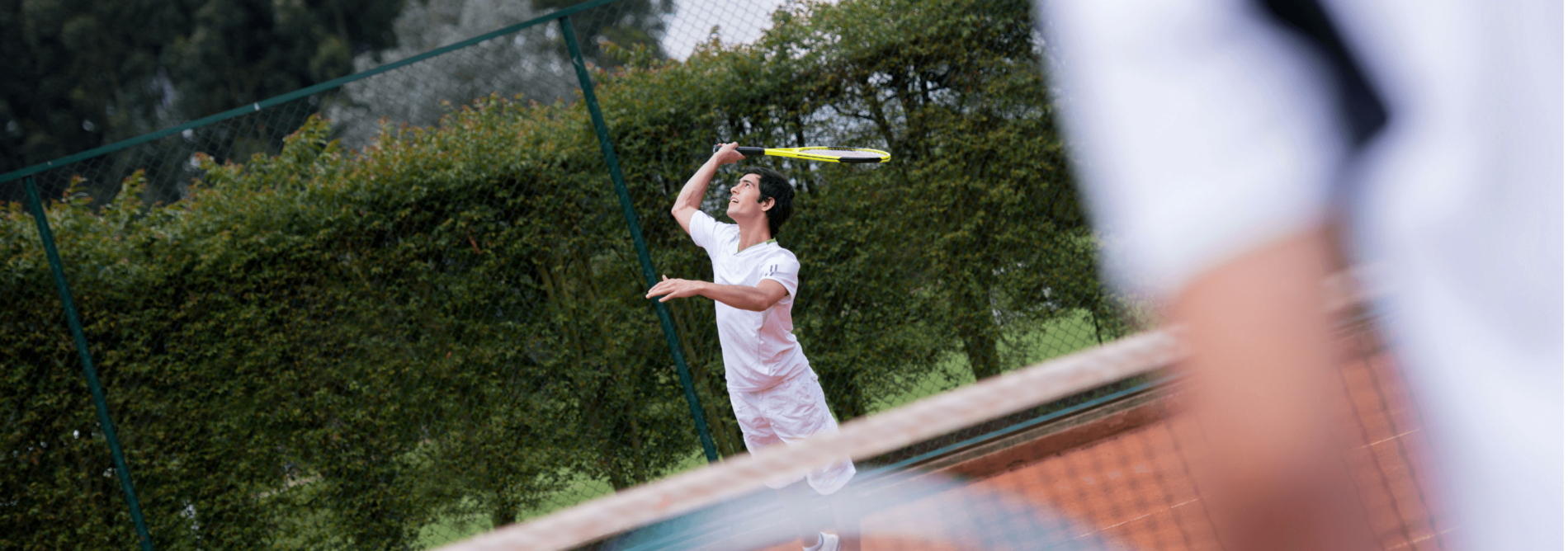 Progressive Tennis
Progressive Tennis
“Learning is fun when you use the right ball, racket and court size!”
Where do I start?
Tennis Manitoba along with Tennis Canada and many other countries have followed the lead of the International Tennis Federation and are implementing the principles of the Play+Stay program for starter players of all ages.
| Red ball is a great way for 8 and under players or beginner adults to start out in tennis | |
| Orange ball is a great way for 8 & 9 year olds to continue their progress from red ball | |
| Green ball is a great way for 10 year olds to continue their progress from red and orange ball | |
| Yellow ball tennis is the start of full-court tennis with a regular ball |

Red ball 1/2 court tennis is for players aged 8 and under and starter adults. It is played on smaller courts with shorter rackets and softer balls. It’s just like the real thing and will give you the chance to have long rallies and play different types ofshots, which should be lots of fun.
Ball: A red sponge ball is used indoors and a red felt ball is used outdoors. They are larger and slower than a regular ball.
Court: A smaller court of 11m x 5.5m is used.
Net: The net is lower than yellow ball tennis at a height of 80cm.
Racket: A shorter racket of 43cm – 58 cm (17” – 23”) is recommended.
Where: Red ball should be available at a club that’s local to you.
Competitions are usually team based so you can compete in lots of short matches. The scoring for each match should be first to 10 points and competitions should last between 1 and 3 hours. Rookie events in Tennis Manitoba have adopted red ball play.
All competition will be designed around the Rogers First Set Tour – Rookie format guide

Orange ball 3/4 court tennis is for players aged 8 and 9 or those that have progressed through the red ball stage. It is played on slightly larger courts than red ball, with bigger rackets and balls that are not as soft as red balls. It’s the next stage to go through before you start playing on a full sized court and it will help players develop all the different shots, providing fun competition.
Ball: An orange ball is used. It has a low compression that makes it bounce lower, giving the player better control at an important stage of their development.
Court: Orange ball is played on a singles court of 18m x 6.5m and a doubles court of 18m x 8.23m (so the full width of the singles court).
Net: 80cm at the middle of the net.
Racket: A racket of 58cm – 63 cm (23” – 25”) is recommended.
Where: Orange ball should be available at a club that’s local to you.
All competition will be designed around the Rogers First Set Tour – Rookie format guide.

Green ball is used in this transition stage on a full tennis court, with bigger racquets and balls that will help players work on and improve all aspects of their game.
Ball: A green ball is used, which is ideal for players moving from orange ball to regular tennis balls. These balls are low compression balls, around 25% slower than a regular ball.
Court: Green ball is played on a full tennis court for singles and doubles.
Net: The net is at full height.
Racket: A bigger racket of 63cm – 66cm (25” – 26”) is recommended.
Where: Green ball should be available at a club that’s local to you.
All competition will be designed around the Rogers First Set Tour – Rookie format guide.

Yellow ball competition is for players aged 11 and over. It is played on a full tennis court, with full size rackets and full compression yellow balls. It’s the last stage of your tennis development and the technique and skills that you have developed through the stages of mini tennis can now be put into practice.
Ball: A regular yellow tennis ball is used.
Court: Yellow ball is played on a full sized tennis court for singles and doubles.
Net: The net is at full height.
Racket: A full size racket of 27” is recommended, when a player is physically ready.
Where: Yellow ball should be available at a club that’s local to you. It is also played at county, regional, national and international level.
Competitions are team and individual based, providing the chance to compete in 3 set matches. The scoring for each match is usually the best of 3 short sets, or best of 3 full sets and competitions and tournaments can be for a day, over a weekend or over a week in the school holidays.



You must be logged in to post a comment.